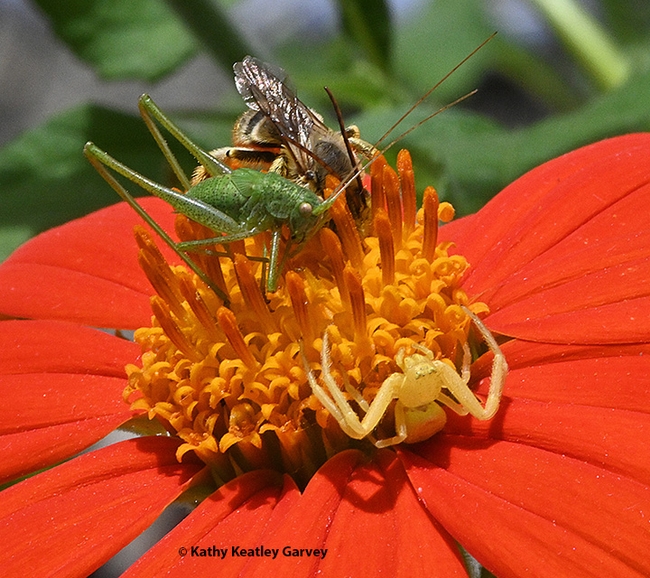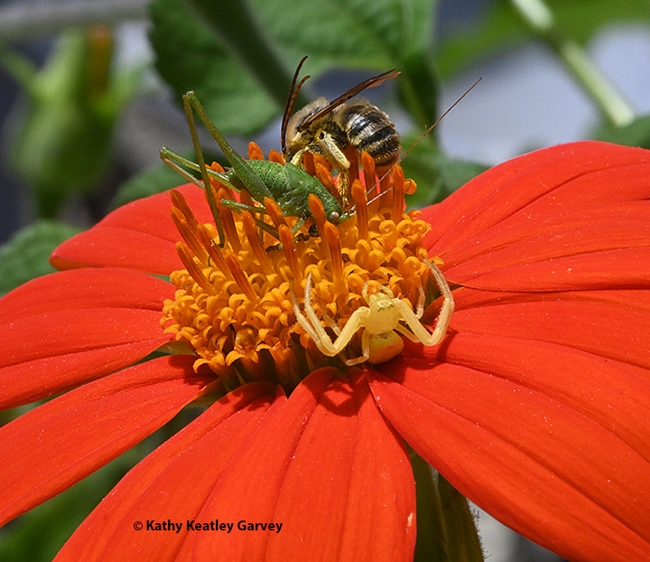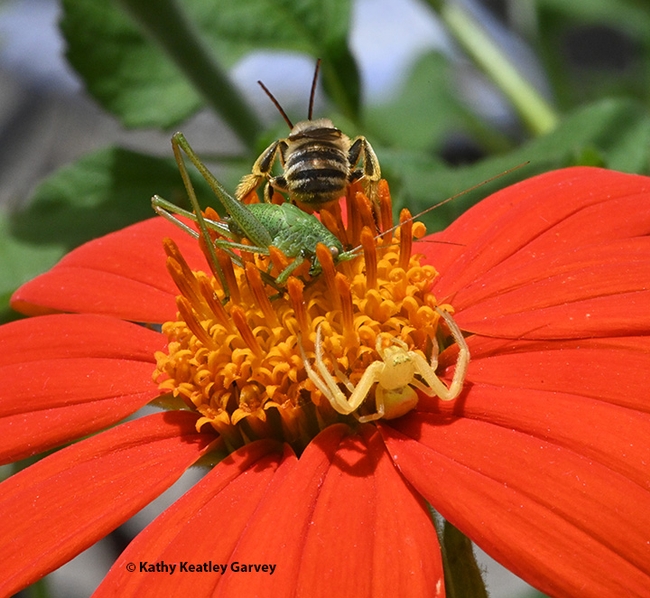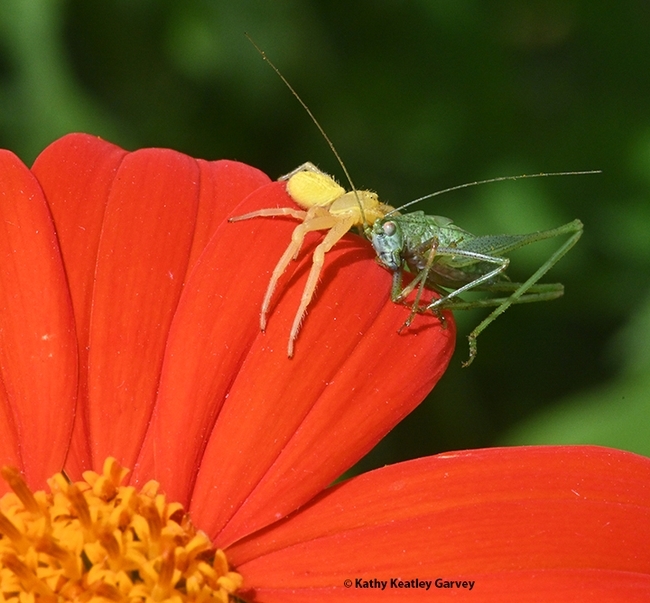- Author: Kathy Keatley Garvey
Ever seen the male longhorned bees, Melissodes agilis, zipping around your garden, trying to bump all critters, large and small, off of "their" blossoms? They own them, ya' know.
These male bees are SO territorial. We've seen them target honey bees, bumble bees, carpenter bees, syrphid flies, spiders and praying mantises. And one another. Everything is fair game.
"They're saving the flowers for the females of their species, so they can mate with them," according to the late Robbin Thorp (1933-2019), UC Davis distinguished emeritus professor, Department of Entomology and Nematology.
But as dusk settles, there they are, the boys sleeping together in what Thorp called "The Boys' Night Out." The females return to their nests and the males "snuggle" together on lavender, sunflowers or whatever blossom suits them.
If you try to photograph them during the day when they're being territorial, you'll need to set your shutter speed at around 1/8000 of a second to freeze the action.
But if you try to photograph them at dawn or dusk when they're sleeping, it's so much easier. They begin to stir around dawn, as honey bees and bumble bees buzz by their sleeping quarters.
What's up, sleepy head?
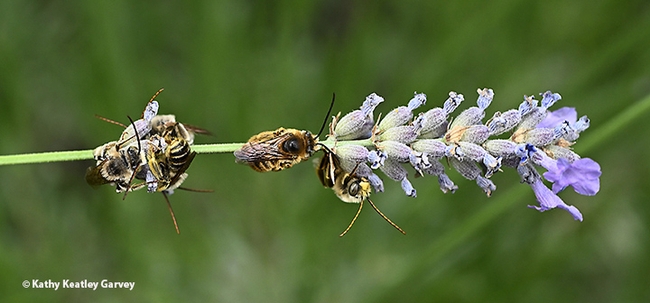
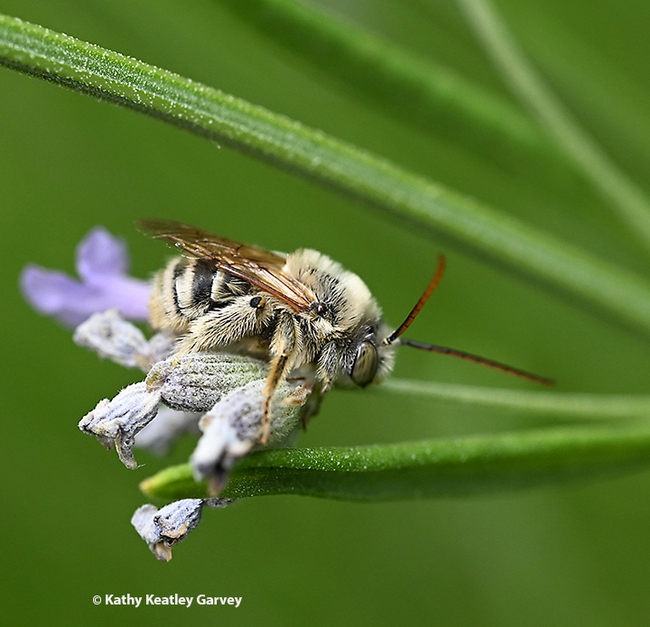
- Author: Kathy Keatley Garvey
If you're feeling overwhelmed during the holiday season and just can't seem to concentrate, check out the focus and intensity of this male territorial bee, a Melissodes agilis.
It was back in July of 2015 when I spotted a meloid beetle on a Mexican sunflower, Tithonia rotundifola, in a Vacaville pollinator garden.
The Melissodes did, too.
Now the meloid beetle is a blister beetle (family Meloidae). Don't touch these beetles because they emit a poisonous chemical, cantharidin, that can blister your skin. It makes for great defense. Touch me, and I'll blister your skin. No wonder the chemical is used to remove warts.
Blister beetles are also known to infest alfalfa hay, and are toxic--even deadly--to livestock. See "Blister Beetles" published by the Montana Agricultural Experiment Station.
"Cantharidin, a vesicant produced by beetles in the order Coleoptera, has a long history in both folk and traditional medicine...Historically, cantharidin has been used as an aphrodisiac, an abortifacient, and a veterinary medicine diuretic." --Cantharidin Revisited, JAMA Dermatology.
So here's this bee targeting the beetle. Oh, the intensity of those eyes...much like a last-minute shopper eyeing a 50 percent-off gift, the last in stock, and ignoring the attempts of last-minute shoppers to grab it.
Did the beetle move?
Not a bit. It rose and ate some of the pollen that the bee was trying to save for its own species.
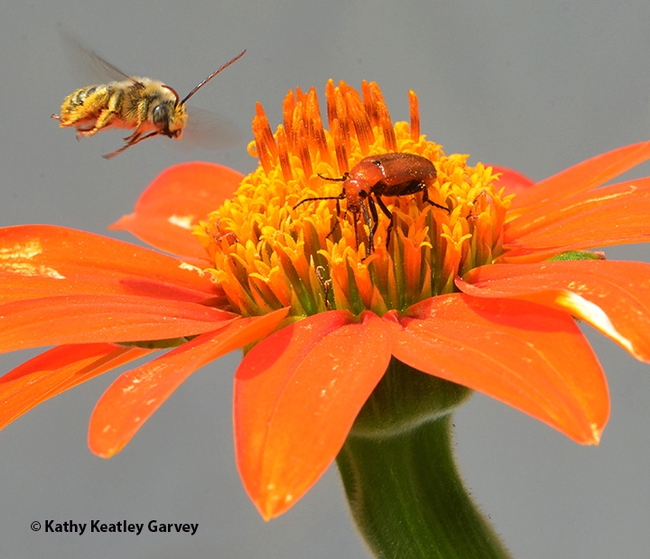
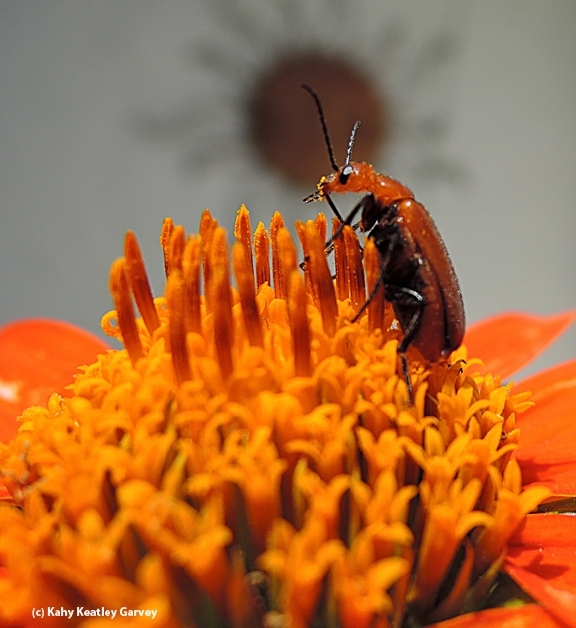
- Author: Kathy Keatley Garvey
Let's roll!
During the golden hour, right before sunset, have you ever watched a male longhorned bee roll full-barrel over a flower at Top Gun speed?
During the day, the male longhorned target assorted insects foraging on "their" patch of flowers. Their goal: to save the nectar for the females of their species, perchance to mate with them.
This bee, probably a Melissodes agilis, burst over a Mexican sunflower, Tithonia rotundifola, at breakneck speed. This may have been his last flight before he settled down to sleep with a cluster of other male bees.
He's promising more territorial maneuvers tomorrow...and the next day...and the next day...
Mine. My patch of flowers.
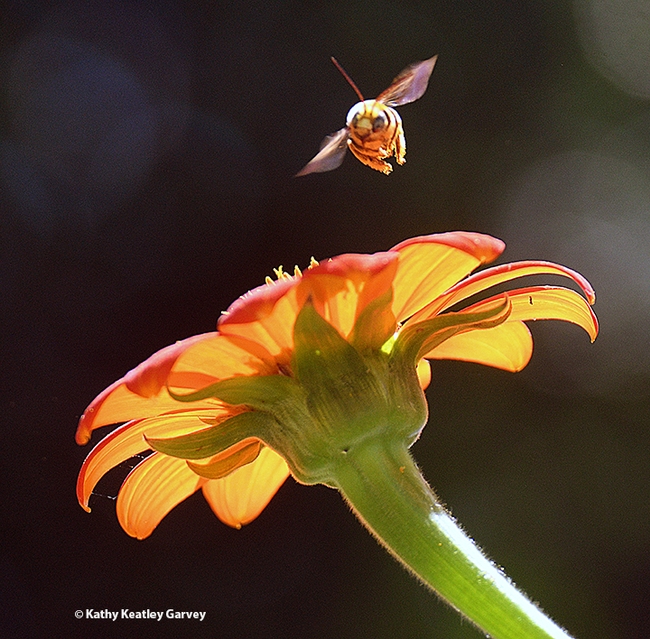
- Author: Kathy Keatley Garvey
Have you ever seen the defensive antics of a female longhorned bee, sometimes called a sunflower bee, as she's trying to forage on flowers while a suitor is trying to get her attention? (To mate with her)
Such is the case in our family's pollinator garden as the activity on, around, above and below the Mexican sunflowers (Tithonia rotundifola) becomes fast and furious.
The female Melissodes agilis kicks a leg up as if to say "Go away! I'm not interested! Quit bothering me!" but a male posse persists.
Finally, the female will buzz off for another flower (escape!) but not for long. Here they come again!
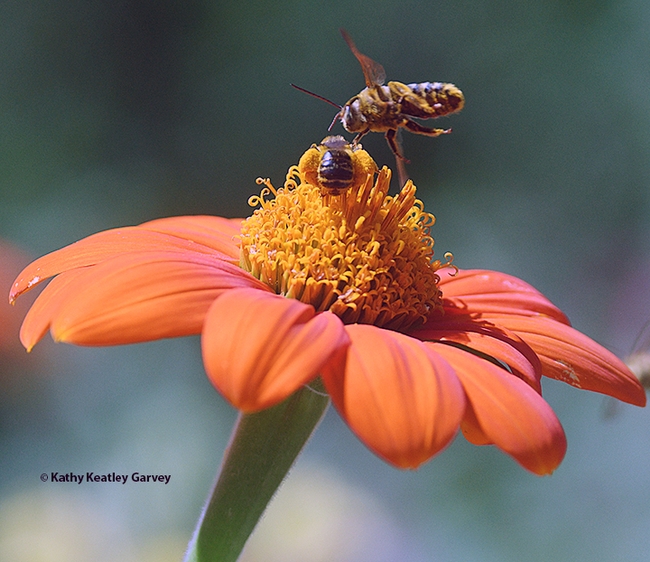
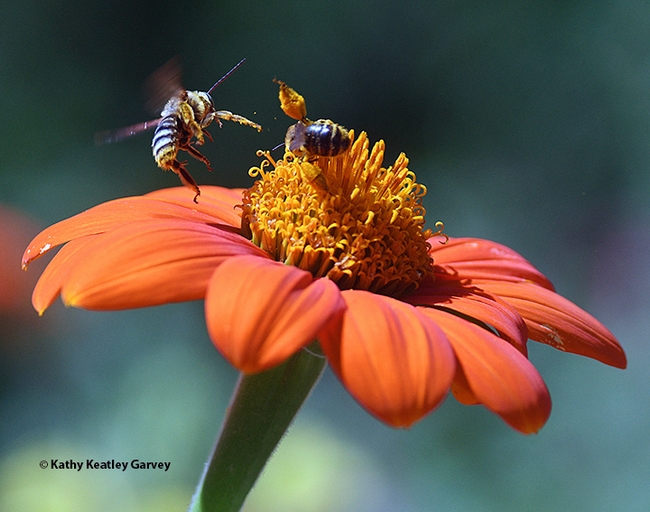
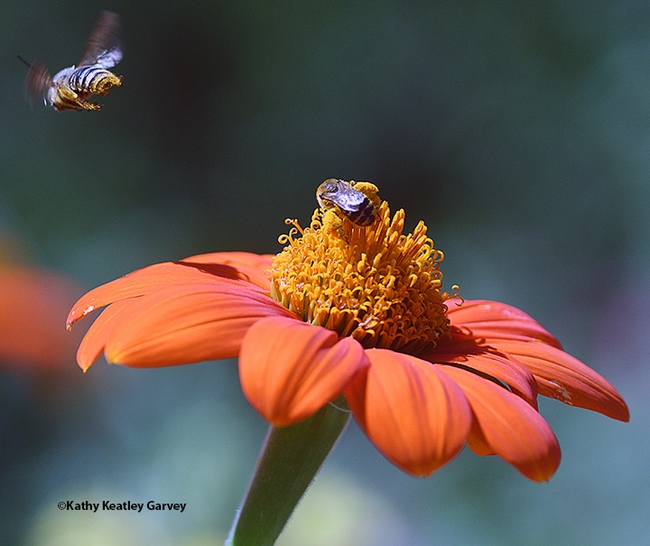
- Author: Kathy Keatley Garvey
So here's this crab spider stalking a katydid nymph foraging on a Mexican sunflower, Tithonia rotundifola.
Dinner awaits!
Suddenly a native bee, Melissodes agilis, lands next to the katydid and begins to sip some nectar.
Decisions, decisions! Do I want a juice katydid nymph or a tasty long-horned bee? Do I have a choice in the matter or does it matter if I have a choice?
A moment in time. Time in a moment. The bee, unaware of danger, continues to forage. Then, abruptly, the bee takes flight.
One menu choice remains.
It was a good day for the crab spider.
It was not a good day for the katydid.
